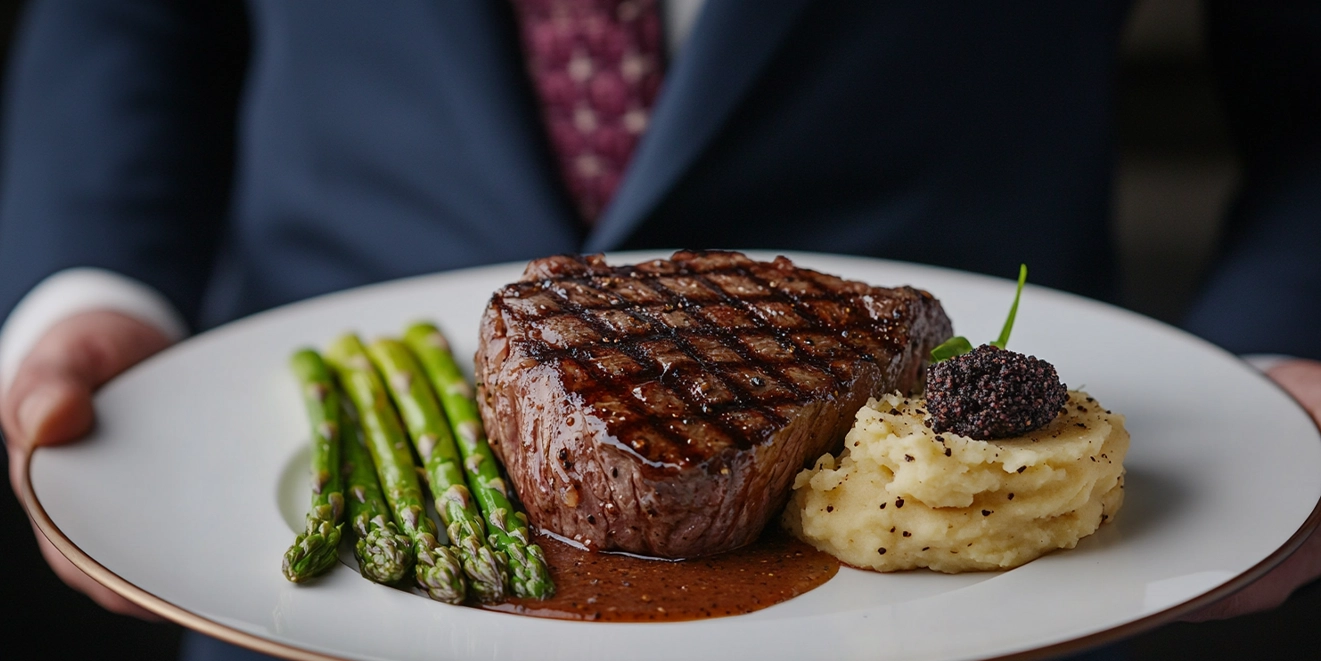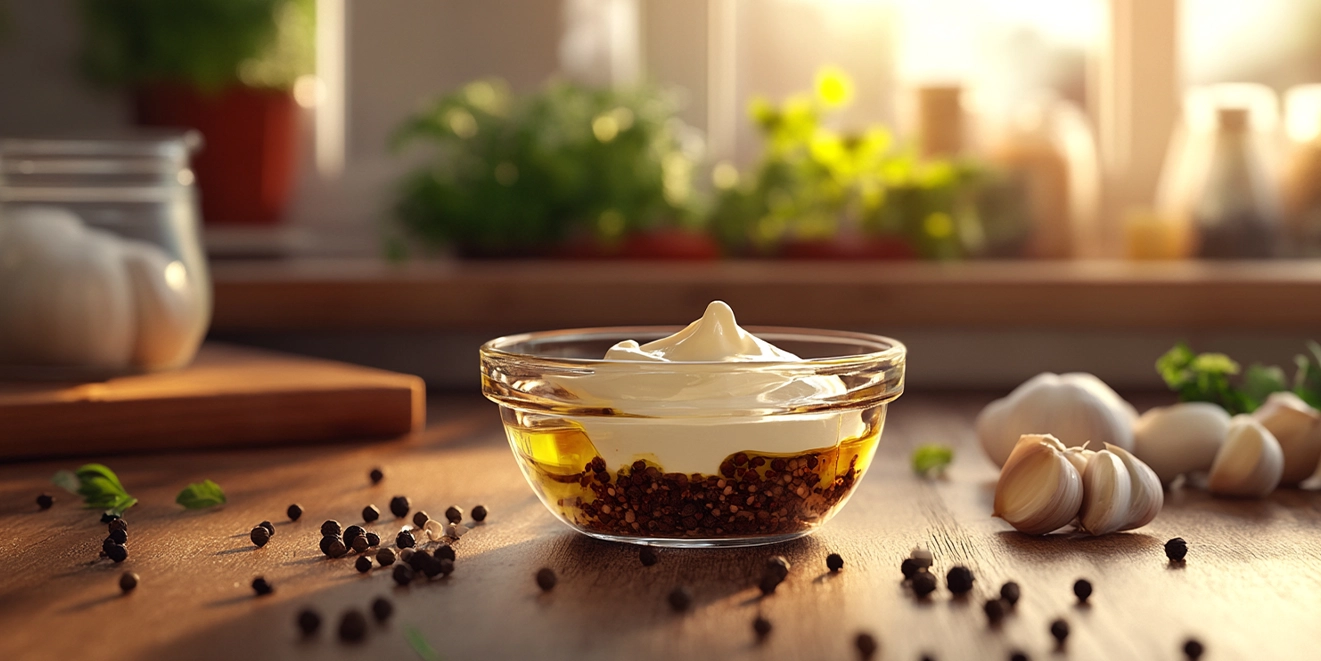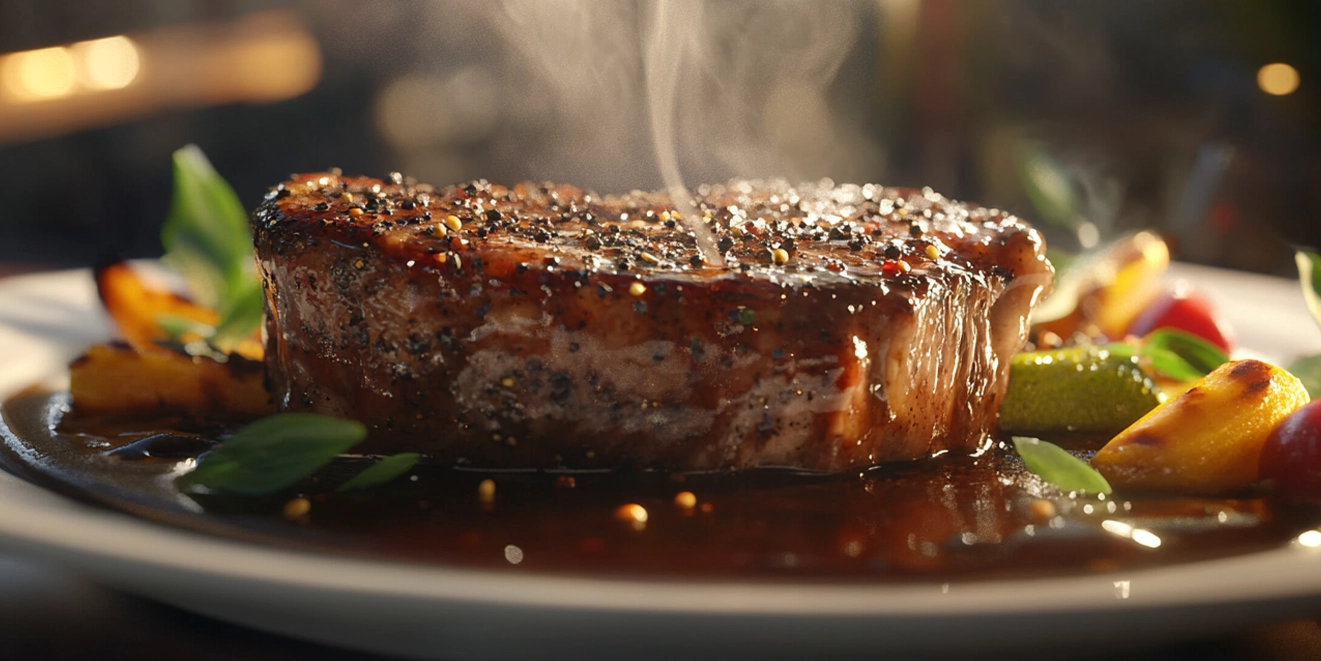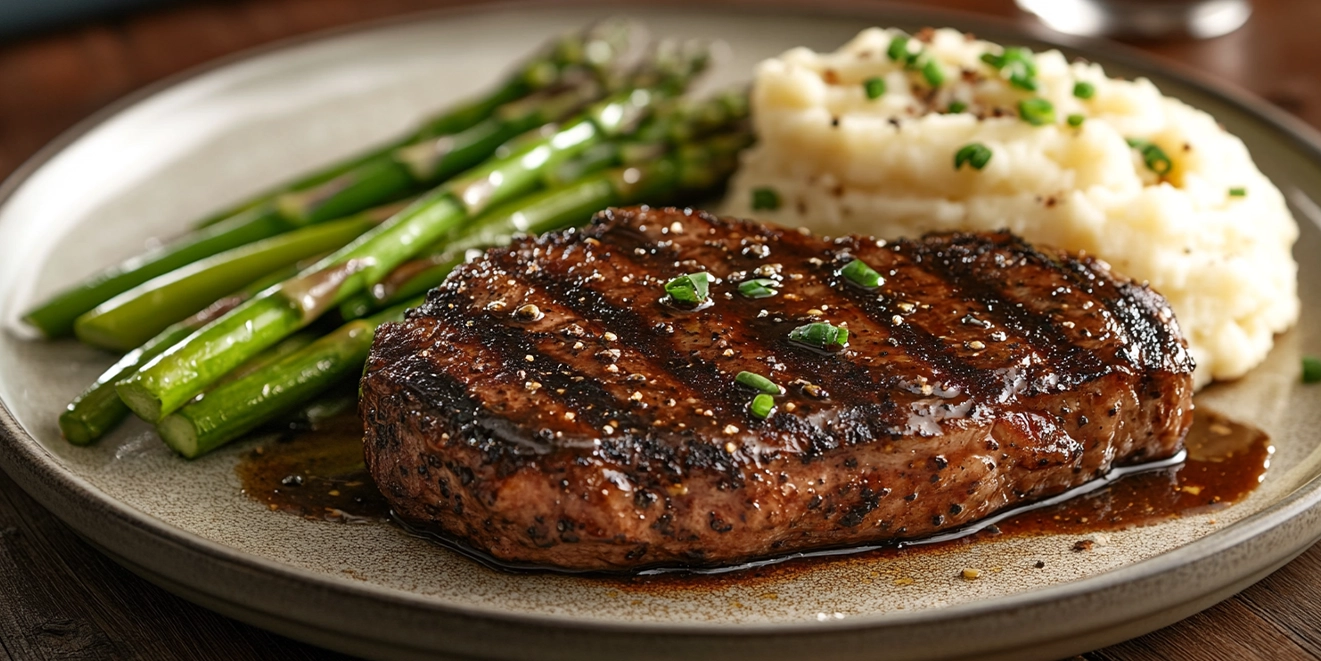
Table of Contents
Introduction to Pepper Steak Sauce
What is Pepper Steak Sauce?
Pepper steak sauce is a flavorful and aromatic condiment designed to complement steak dishes, particularly those made with tender cuts of beef. It typically features a blend of black pepper, cream, butter, and beef stock, with variations that may include garlic, shallots, or wine for enhanced depth. Known for its rich, spicy, and savory profile, this sauce adds a delightful kick to steak, enhancing its natural flavors.
Origins of Pepper Steak Sauce
The origins of pepper steak sauce can be traced back to French cuisine, where the classic “Steak au Poivre” (steak with pepper) became a hallmark of sophisticated dining. French chefs mastered the art of coating steaks in cracked black pepper before searing and serving them with a creamy, pepper-infused sauce. This technique, aimed at highlighting the robust flavor of the peppercorn, set the foundation for modern variations of the sauce.
Popularity in Global Cuisines
Over the years, pepper steak sauce has transcended its French roots to gain popularity in global cuisines. It is a staple in steakhouses and fine dining establishments in Western countries. In Asia, adaptations like the Chinese pepper steak incorporate soy sauce, ginger, and bell peppers, creating a fusion of bold flavors. The sauce’s versatility and adaptability make it a favorite in home kitchens and restaurants worldwide, cherished for its ability to elevate a simple steak into a gourmet experience.
Key Ingredients in Pepper Steak Sauce

The Role of Black Pepper
Black pepper is the star ingredient in pepper steak sauce, delivering its signature bold, spicy kick. Typically used as freshly cracked peppercorns, it provides a coarse texture and intense flavor that forms the base of the sauce. The heat and aroma of black pepper enhance the richness of the steak, creating a perfect balance between spicy and savory.
Essential Liquids: Soy Sauce, Worcestershire, and Others
The liquids in pepper steak sauce serve as the foundation for its depth of flavor. Soy sauce adds a salty, umami-rich element that complements the natural flavors of the beef. Worcestershire sauce introduces a tangy and slightly sweet complexity, often enhancing the overall umami profile. Other liquids, such as beef stock, cream, or even wine, can be incorporated to add richness and create a smooth, velvety texture.
Sweeteners: Honey and Brown Sugar
Sweeteners like honey or brown sugar are often added to balance the boldness of black pepper and the saltiness of the liquid ingredients. These ingredients provide a subtle sweetness that rounds out the flavors, preventing the sauce from becoming overly sharp or salty. Honey can lend a mild floral note, while brown sugar brings a hint of molasses-like depth, making the sauce more nuanced and appealing.
The Role of Spices and Seasonings
How Garlic Enhances Flavor
Garlic is a versatile seasoning that adds depth and aroma to pepper steak sauce. Its savory and slightly sweet flavor complements the spiciness of black pepper and balances the sauce’s richness. Whether used fresh, roasted, or powder, garlic enhances the dish’s overall complexity, making it more robust and satisfying.
Other Seasonings Commonly Used
In addition to garlic, other seasonings like thyme, rosemary, and paprika are often included to add layers of flavor. Thyme and rosemary bring a touch of earthiness, while paprika can add a subtle smokiness or mild heat. These seasonings combine to create a well-rounded flavor profile that pairs perfectly with steak.
Variations of Pepper Steak Sauce Around the World
Asian-Inspired Pepper Steak Sauces
Asian adaptations of pepper steak sauce often incorporate soy sauce, ginger, and sesame oil. These variations emphasize umami and bring a distinctively savory and slightly tangy taste. In Chinese cuisine, bell peppers and onions are frequently added, creating a wholly flavorful and colorful dish.
Western-Style Recipes and Their Tweaks
Western-style recipes tend to resemble the classic French “Steak au Poivre,” which uses heavy cream, brandy, and cracked black peppercorns. However, modern tweaks include adding mustard for tanginess or substituting cream with yogurt for a lighter version. These adaptations cater to diverse tastes while retaining the sauce’s signature characteristics.
Vegetarian and Vegan Adaptations
For plant-based versions, the sauce can be made with coconut cream or almond milk instead of dairy. Nutritional yeast may replace Worcestershire sauce to retain the umami element, while vegetable stock replaces beef stock. These adjustments make the sauce accessible to vegetarians and vegans without compromising its flavor.
Nutritional Information of Pepper Steak Sauce
Caloric Breakdown of the Sauce
The caloric content of pepper steak sauce varies depending on the ingredients used. Traditional versions with cream and butter are higher in calories, while lighter adaptations with non-dairy milk or reduced-fat options can significantly lower the count. On average, a serving of pepper steak sauce contains 100–150 calories.
Health Benefits of Black Pepper
Black pepper is not just a flavor enhancer; it also offers several health benefits. It contains piperine, a compound known for its anti-inflammatory and antioxidant properties. Black pepper may aid digestion, improve nutrient absorption, and boost metabolism, making it a functional ingredient in the sauce.
Managing Sodium and Sugar Levels
Low-sodium soy sauce or Worcestershire sauce can be used to keep sodium levels in check. Sweeteners like honey or brown sugar should be measured carefully to prevent excessive sugar content. Balancing these elements ensures that the sauce remains flavorful without compromising health goals.
Step-by-Step Guide to Making Pepper Steak Sauce at Home

List of Ingredients Needed
To prepare a classic pepper steak sauce, you’ll need the following ingredients:
- Two tablespoons unsalted butter
- Two tablespoons of olive oil
- Two garlic cloves, minced
- Two teaspoons of freshly cracked black pepper
- One teaspoon of Worcestershire sauce
- ½ cup beef stock (or vegetable stock for vegetarian versions)
- ½ cup heavy cream (or coconut cream for vegan options)
- One teaspoon of soy sauce (optional)
- One teaspoon of Dijon mustard (optional for extra tanginess)
- Salt to taste
Cooking Process: Mixing and Simmering
- Prepare the Base
- Heat a skillet over medium heat and melt the butter with the olive oil. Add the minced garlic and sauté for 1-2 minutes until fragrant but not browned.
- Add the Black Pepper
- Stir in the freshly cracked black pepper and cook for about 30 seconds to release its aroma. This step intensifies the pepper’s flavor.
- Incorporate the Liquids
- Add the beef stock (or vegetable stock) and Worcestershire sauce. Bring the mixture to a gentle boil, then reduce the heat to a simmer. Allow it to cook for 3-5 minutes to reduce slightly.
- Finish with Cream
- If using, stir in the heavy cream (or your chosen non-dairy alternative) and soy sauce. Let the sauce simmer for another 5 minutes, stirring occasionally until it thickens to your desired consistency.
- Taste and Adjust
- Taste the sauce and adjust the seasoning with salt or pepper as needed. For added tanginess, mix in a small amount of Dijon mustard.
Tips for Achieving the Perfect Consistency
- Gradual Heating: Simmer the sauce gently to avoid curdling, especially when using cream.
- Thickness Adjustment: If the sauce is too thin, let it simmer a bit longer to reduce. If it’s too thick, add a splash of stock or cream to loosen it.
- Smooth Texture: Strain the sauce before serving if you prefer a velvety consistency, or leave it unstrained for a rustic look with visible pepper flakes.
- Serving Fresh: Serve the sauce warm immediately after cooking for the best flavor and texture.
Common Mistakes When Making Pepper Steak Sauce
Overpowering Pepper Flavors
Too much black pepper can produce an overly spicy sauce that masks the other flavors. To avoid this, start with a smaller amount and gradually add more to suit your taste. Freshly cracked peppercorns provide the best flavor but should be used in moderation.
Balancing Saltiness and Sweetness
Achieving the perfect balance of saltiness and sweetness is key to a delicious sauce. Overusing soy sauce or Worcestershire can make the sauce salty, while excessive sweeteners like honey or brown sugar can overpower the dish. Taste as you go and adjust gradually to maintain harmony.
Avoiding a Runny Consistency
A watery sauce can dilute the flavors and ruin the presentation. Let the sauce simmer until it reduces to your desired thickness to avoid this. If it remains too thin, a small amount of cornstarch mixed with water can be added as a thickening agent.
Storing Pepper Steak Sauce for Longevity
Proper Refrigeration Techniques
Allow the sauce to cool completely before transferring it to an airtight container. Store it in the refrigerator for up to 3–4 days. Label the container with the date to track freshness.
Can You Freeze Pepper Steak Sauce?
Yes, pepper steak sauce can be frozen. Use a freezer-safe container or zip-top bag, leaving some room for expansion. For best results, freeze the sauce without cream, as dairy can separate when thawed. Add the cream after reheating the sauce.
Shelf Life and Spoilage Signs
Refrigerated sauce lasts 3–4 days, while frozen sauce can be stored for up to 2 months. Discard the sauce if it develops a sour smell, off taste, or visible mold. Always reheat the sauce to a simmer before serving to ensure it’s safe to eat.
Pairing Pepper Steak Sauce with Meals
Best Cuts of Beef for Pepper Steak
Pepper steak sauce pairs beautifully with tender cuts of beef like filet mignon, ribeye, or New York strip. These cuts have enough marbling to complement the sauce’s richness, creating a luxurious dining experience.
Non-Beef Dishes That Pair Well
Pepper steak sauce isn’t just for beef! It can enhance grilled chicken, pork chops, or even roasted salmon. Vegetarians can enjoy it drizzled over grilled mushrooms, tofu, or roasted vegetables like eggplant and zucchini.
Side Dishes to Serve with Pepper Steak
Complete your meal with complementary sides such as:
- Creamy Mashed Potatoes: Their smooth texture balances the boldness of the sauce.
- Steamed Vegetables: Broccoli, green beans, or asparagus add freshness and crunch.
- Buttery Garlic Bread: Perfect for soaking up the sauce.
- Rice or Risotto: A neutral base that absorbs the flavors of the sauce beautifully.
Pairing and Serving Suggestions
Pepper steak sauce is versatile and can elevate various dishes beyond just steak. Here are some pairing ideas to inspire your next meal:
- Mashed Potatoes
- The creamy texture of mashed potatoes balances the bold flavors of the pepper sauce.
- Grilled Vegetables
- Enhance your meal’s nutritional profile by serving alongside charred zucchini, bell peppers, or asparagus.
- Rasta Pasta
- Toss the pepper steak sauce with pasta for a unique version of Rasta Pasta, giving your meal a creative twist.
- Crispy Tater Tots
- Add a playful touch to your plate by pairing it with crispy tater tots, perfect for soaking up every bit of the sauce.

Frequently Asked Questions About Pepper Steak Sauce
What is pepper steak made of?
Pepper steak is typically made with tender cuts of beef, such as sirloin or flank steak, and stir-fried with a variety of vegetables like bell peppers and onions. It is often seasoned with soy sauce, garlic, and black pepper, creating a savory and slightly spicy flavor profile. In Western cuisines, it may refer to a steak cooked with a peppercorn crust and served with a creamy pepper sauce.
What is pepper sauce made of?
Pepper sauce is a rich and flavorful condiment made from a base of black or green peppercorns. Common ingredients include cream, butter, beef or vegetable stock, garlic, and Worcestershire sauce. Variations may also include brandy, wine, or soy sauce for additional depth of flavor.
What is steak sauce made of?
Steak sauce is a tangy, savory condiment commonly used as a topping or dip for steaks. It often contains ingredients like tomatoes, vinegar, molasses, spices, and sometimes fruits like raisins or tamarind for sweetness. Commercial brands like A1 Steak Sauce are popular, but homemade versions allow for customization to taste.
Does peppercorn sauce contain brandy?
Traditional peppercorn sauce often includes brandy or cognac, added to the pan after cooking the peppercorns and other aromatics. The alcohol is typically flamed or simmered to cook off, leaving behind a subtle depth and richness that enhances the sauce’s flavor. However, the brandy can be omitted or substituted with stock for a non-alcoholic version.
Conclusion
Pepper steak sauce is a versatile and flavorful accompaniment that elevates any dish, from classic steak to vegetarian alternatives. With its rich history, diverse variations, and adaptability, it has secured a place in kitchens and cuisines worldwide. Whether experimenting with spices, balancing flavors, or pairing them with your favorite meals, this sauce offers endless opportunities for creativity and enjoyment. By mastering their preparation and understanding their nuances, you can bring a gourmet touch to your home-cooked dishes.
